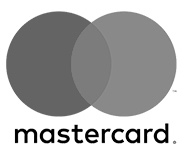Brand design-concept for the network of AMG gas and charging stations Дубинин Виталий
Task
Methane’s popularity as a fuel is growing — a trend linked with its environmental friendliness, technological prowess, and low cost as compared with gasoline and diesel fuels. We were tasked with creating a design concept that included the architectural design of the physical stations as well as the brand’s visual identity
Ideas and solutions
We wanted to assure that the brand identity could easily be developed further, but that it was also “anchored” and easily identifiable. We achieved this “anchor” using a system of brand-specific colors and logos, and leveraged regional context to assure that the brand image would be dynamic. The logo design began with its typography. Its visual component was based on an alternative version of Eastman’s logo: the upper portion of the textual element resembles a row of fuel cannisters, and the shapes of open gates, pipes, and constructions can be made out in the glyphs. Regarding colors, we noted that almost no one in the fuel industry uses the color red, and so we implemented red fuel cannisters to assure that the network’s branding stood out in visual space. As an accent color we used a blue, the color of burning methane and of electricity, and black, the foremost color of the petroleum industry. The key element of the brand identity lies in the graphical element. We created a unique pattern and set of symbols for each region: for Saint Petersburg, the pattern includes the form of the city’s famous gates, bridges, and river; for Pskov, the decorations of historic churches; and for Krasnodar, the design and walls of Kuban Fortress. Through these regional designs and symbols, we created the framework for a gamification based on fuel maps. Each map is branded differently for each region, making them collectible. Furthermore, it was essential that our branding was completely compatible with the architectural design of the stations. This motivated us to bring an architect on board to model the fuel stations. Each time new visual advertising materials are created, the old materials must be taken down from stations and the new materials installed in their place. This process is expensive and labor-intensive. We proposed the installation of a grid of light diodes on each station, with which any image or text could be displayed.




